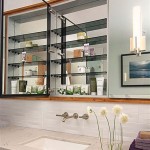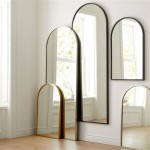Medicine Cabinets: Functionality and Design Beyond the Mirror
Medicine cabinets are indispensable components of bathroom organization, offering dedicated storage space for medications, toiletries, and personal care items. While traditionally integrated with a mirrored door, medicine cabinets without mirrors present a distinct set of advantages and design considerations, catering to specific needs and preferences. This article explores the diverse world of medicine cabinets without mirrors, examining their benefits, design variations, installation considerations, and practical applications.
The core function of any medicine cabinet remains the same: providing a secure and organized space to store items typically found in a bathroom. This includes, but is not limited to, prescription medications, over-the-counter remedies, first-aid supplies, dental hygiene products, skincare essentials, and grooming tools. The absence of a mirror does not detract from this primary function; instead, it opens up possibilities for placement and customization that might be restricted by the presence of a reflective surface.
The decision to opt for a medicine cabinet without a mirror often stems from aesthetic considerations, space constraints, or the desire for a more minimalist design. In bathrooms where a large vanity mirror already exists, adding a mirrored medicine cabinet can create an overwhelming and visually cluttered effect. A mirrorless cabinet provides a complementary storage solution without duplicating the reflective surface. Furthermore, individuals with specific design preferences, such as those favoring a particular style of mirror frame or wanting to maintain a consistent aesthetic throughout the bathroom, may find a mirrorless medicine cabinet to be a more suitable option.
Advantages of Mirrorless Medicine Cabinets
Medicine cabinets lacking mirrors offer several key advantages that make them a compelling choice for many homeowners. These benefits relate to design flexibility, customization options, and specific suitability for certain bathroom configurations.
One significant benefit is the enhanced design flexibility they afford. Without the constraint of a mirror, the cabinet door can be constructed from a wider variety of materials, including wood, metal, glass, and even tile. This allows the cabinet to seamlessly integrate with the existing bathroom décor and to reflect the homeowner's personal style. A solid wood cabinet door, for example, can complement a rustic or traditional bathroom design, while a sleek metal door can enhance a modern or industrial aesthetic. The absence of a mirror also eliminates the need to match the cabinet's frame to the existing mirror's frame, simplifying the design process.
Another advantage is the increased opportunity for personalization. The surface of a mirrorless medicine cabinet door can be customized with paint, wallpaper, decals, or other decorative elements. This allows homeowners to create a truly unique and personalized storage solution that reflects their individual taste. Furthermore, a mirrorless cabinet can be easily adapted to accommodate specific storage needs. For example, shelves can be adjusted or reconfigured to accommodate taller bottles or larger items. Additional storage features, such as built-in organizers or drawers, can also be incorporated into the cabinet design.
Mirrorless medicine cabinets are particularly well-suited for small bathrooms or bathrooms with limited wall space. In these situations, a large, mirrored medicine cabinet can feel overwhelming and visually shrink the space. A smaller, mirrorless cabinet can provide essential storage without dominating the room. Furthermore, in bathrooms where a large vanity mirror is already present, a mirrorless medicine cabinet can serve as a supplementary storage solution without creating a redundant reflective surface. This can help to maintain a clean and uncluttered visual aesthetic.
Design and Material Considerations
The design of a medicine cabinet without a mirror involves careful consideration of several factors, including size, shape, materials, and door style. These elements contribute to the overall functionality and aesthetic appeal of the cabinet.
The size of the cabinet should be determined by the available wall space and the amount of storage required. Smaller cabinets are ideal for compact bathrooms or for storing a limited number of items. Larger cabinets can provide ample storage for larger families or for individuals who prefer to keep a wider range of toiletries and medications on hand. The depth of the cabinet is also an important consideration. A shallower cabinet will protrude less from the wall, while a deeper cabinet will offer more storage capacity.
The shape of the cabinet can vary depending on the homeowner's preferences and the overall design of the bathroom. Rectangular cabinets are the most common, but square, oval, and even custom-shaped cabinets are also available. The shape of the cabinet door can also be customized. A flat door provides a clean and modern look, while a recessed or paneled door can add visual interest and texture.
The materials used to construct the cabinet will significantly impact its durability, appearance, and resistance to moisture. Wood is a popular choice for its warmth and natural beauty, but it must be properly sealed to prevent water damage. Metal is another durable option that is resistant to moisture and corrosion. Glass can be used for the cabinet door to create a transparent or translucent effect. MDF (Medium Density Fiberboard) is a cost-effective option, but it is not as resistant to moisture as wood or metal.
The door style is another important design consideration. Hinged doors are the most common, but sliding doors and lift-up doors are also available. Hinged doors can be installed to swing either left or right, depending on the homeowner's preference and the layout of the bathroom. Sliding doors are a good option for tight spaces, as they do not require any swing space. Lift-up doors are ideal for cabinets that are mounted above eye level.
Installation and Placement
The installation of a medicine cabinet without a mirror is generally similar to the installation of a traditional mirrored cabinet. However, there are a few key considerations that should be taken into account to ensure a successful installation.
First, it is essential to choose a suitable location for the cabinet. The cabinet should be mounted on a wall that is strong enough to support its weight, especially when fully loaded with items. The ideal location should also be easily accessible and convenient to use. Avoid placing the cabinet in areas that are directly exposed to water, such as above the bathtub or shower.
Before beginning the installation process, it is important to gather the necessary tools and materials. This typically includes a drill, a level, a screwdriver, wall anchors, and mounting hardware. The wall anchors should be appropriate for the type of wall material (e.g., drywall, plaster, or concrete). Consult the manufacturer's instructions for specific recommendations on the appropriate type of wall anchors to use.
During the installation process, it is important to use a level to ensure that the cabinet is mounted straight and evenly. The mounting hardware should be securely fastened to the wall to prevent the cabinet from falling. If the cabinet is being recessed into the wall, it is important to carefully measure and cut the opening to ensure a snug fit. It is also important to ensure that there are no electrical wires or plumbing pipes behind the wall that could be damaged during the installation process.
The placement of the medicine cabinet should also be carefully considered in relation to other bathroom fixtures and features. Ensure that the cabinet door can be opened and closed freely without obstructing access to the sink, toilet, or shower. Consider the height of the cabinet in relation to the height of other bathroom fixtures. A medicine cabinet that is mounted too high or too low can be uncomfortable to use. Ensure the cabinet is accessible to all users, including individuals with disabilities.
Finally, consider the lighting in the bathroom when choosing a location for the medicine cabinet. If the cabinet is located in a dark corner of the bathroom, it may be necessary to install additional lighting to improve visibility. A small LED light can be installed inside the cabinet to illuminate the contents. External lighting can also be used to highlight the cabinet and add visual interest to the bathroom.

Medicine Cabinets Without Mirrors The Home Depot

Wg Wood S Davis Slab Panel Frameless 15 5 In W X 31 H Primed Gray Recessed Medicine Cabinet Without Mirror With Led Light Dav 230 The Home Depot

Ilration Of Good Recessed Medicine Cabinet No Mirror Bathroom Small Wall

Shaker Style Recessed Medicine Cabinets White Black Dark Gray Or Unfinished 2 Sizes By Fox Hollow Furnishings

Recessed Medicine Cabinet W Picture Frame Door No Mirror White Interior 14x18

Glacier Bay 23 1 In W X 27 9 H White Rectangular Medicine Cabinet Without Mirror With Adjustable Shelves 45396 The Home Depot

Bathroom Medicine Cabinets Signature Hardware

Home Decorators Collection 30 In W X 29 H Rectangular Medicine Cabinet With Mirror 45393 The Depot

70 Surface Mount Medicine Cabinet No Mirror Apartment Kitchen Ideas Check More At Простые ванные комнаты Шкафчик с зеркалом для ванной Стиль

Fresca Medicine Cabinets At Com








